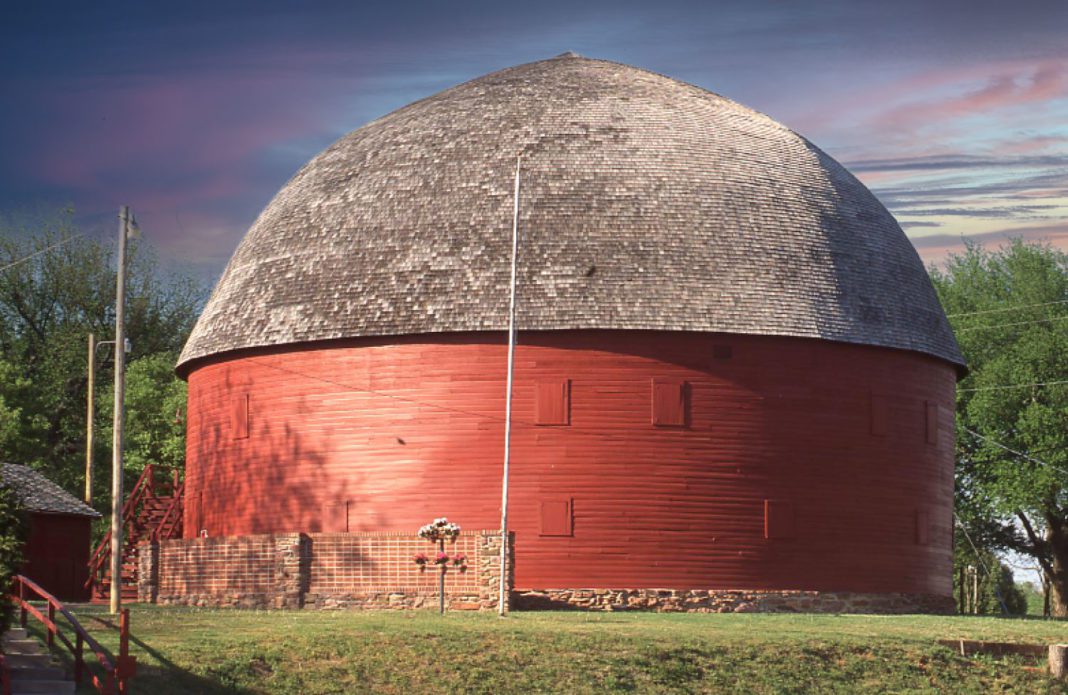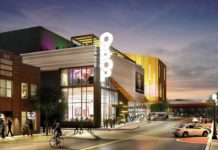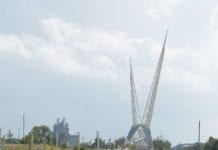Some people leave a mark on the world through scientific discovery or philanthropic efforts. Others have a more unique approach; they make a name for themselves by building roadside spectacles that have caught the attention of countless travelers over the years. Pay a visit to one of these oddities for a one-of-a-kind experience on your next road trip around Oklahoma.
Spider VW Bug (Lexington)
Towering 15 feet high with red fangs, the Spider Volkswagen (VW) Bug alongside U.S. Highway 77 was one of 2,500 Volkswagens in Robert Leroy Wilson’s collection. He began collecting Volkswagens in his forties, and eventually opened Wilson’s Volkswagen, a salvage and repair business, in Lexington in 1978.
The auto-shop owner also had a passion for racing. Wilson participated over a dozen times in the Great Race – a precision race in which competitors would drive Pre-World War II automobiles for distances up to 3,000 miles. Believing that Lexington could be the next Indianapolis, Wilson built the Lexington 77 Speedway in 1984. He constructed the Spider VW Bug as an advertisement for his track and shop.
The speedway eventually closed in 1996. And when Wilson passed, his Volkswagen collection went to auction … sans the Spider VW Bug. In 2019, Lexington local Tim Short started a Facebook page called “Save the Spider’’ to rally efforts to restore the bug. The page has garnered nearly 2,000 followers.
The Round Barn (Arcadia)
A healthy fear of tornadoes was William Odor’s possible reasoning for constructing the Round Barn in Arcadia. Built in 1898, the barn – and others of the same shape – were commonly believed to be able to withstand cyclones. Others speculate that he adopted the circular shape because it could hold more mules compared to square barns.
Odor constructed the two-story barn by soaking 2×4 planks in the river until they were malleable. Once finished, he used the barn for keeping his livestock and hay. Odor also installed a hardwood floor, so his farm workers could use it as a dance venue on the weekends.
The barn fell into a state of dilapidation after sitting vacant for many decades. When its roof collapsed in 1988, several preservationists banded together to restore the structure. The Arcadia Historical and Preservation Society now operates the Round Barn, which houses a museum and gift shop. Many locals claim that the Round Barn is the most photographed Oklahoma attraction of all time.
The Blue Whale (Catoosa)
Appearing on televisions and in newspaper cartoons, the Blue Whale in Catoosa is heralded as one of the most iconic stops along Route 66. (Even Sir Paul McCartney is rumored to have visited.)
The 80-foot-long aquatic structure sits on a small pond and features a diving board and slide. Hugh Davis, former director at the Tulsa Zoo, spent two years building the whale as an anniversary gift for his wife, Zelta. She was especially fond of whales, and the couple had a history of caring for animals together. In their retirement, they opened Nature’s Acres, an amusement park where they raised alligators and snakes.
Hugh finished construction in 1972 and opened the attraction to the public alongside his park. During its heyday, the Blue Whale became a popular public swimming hole that attracted hundreds of daily visitors. Although the whale is recognized for its vibrant hue, the couple once debated painting the whale black like an Orca. They settled on blue instead because it would seem friendly to those passing by.
Also visit: Ed Galloway’s Totem Pole Park, Foyil; Toy and Action Figure Museum, Pauls Valley; the Full-Size Transformer, Stillwater; the Atomic Cannon, Fort Sill.



























